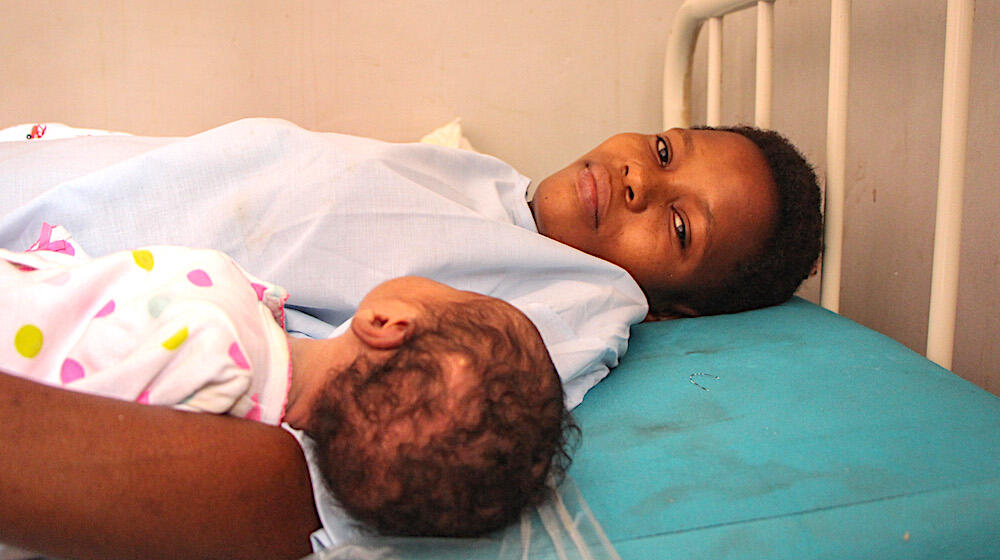UNITED NATIONS, New York – In theory, ending maternal mortality should be achievable. Nearly every maternal death is preventable, and the clinical expertise and technology necessary to avert these losses have existed for decades.
Why, then, do almost 800 women still die every day from maternal causes? How, today, can one woman die every two minutes from pregnancy or childbirth?
It’s a question that has only grown more urgent with the release of a new report from the United Nations, “Trends in Maternal Mortality”, which reveals progress on ending preventable maternal deaths has not only slowed over the last five years, but stagnated.
Between 2000 and 2015, global maternal mortality shrank by one third, spurred in part by falling fertility rates, increased use of and satisfied need for contraceptives, and the continued march of health care advances.
Since 2016, however, the rate has hardly decreased at all. While the average reduction was about 3 per cent for the years between 2000 and 2015, it ground down to almost zero for the years between 2016 and 2020.
“We have the tools, knowledge and resources to end preventable maternal deaths,” said UNFPA Executive Director Dr. Natalia Kanem. "It is unacceptable that so many women continue to die needlessly in pregnancy and childbirth.”
Slowing momentum
But humanitarian crises and conflict have worked against countries’ efforts to reduce maternal deaths, challenges that climate change has only exacerbated. On its current trajectory, the world will fall short of its aim to reduce maternal mortality, leaving more than one million mothers at risk of preventable death by 2030.
There is still time to fight for these women’s survival, however. To accelerate progress, experts recommend countries work to fortify their health systems, provide universal health coverage and tackle obstacles preventing marginalized communities from accessing quality care.
A critical step in reducing maternal mortality is preventing unintended pregnancies, which make up nearly half of all pregnancies. This in turn requires increasing access to contraceptives, improving comprehensive sexuality education, and protecting women’s right to decide whether, when and with whom to have children, with unsafe abortion being among the leading causes of maternal mortality.
Midwives in particular are crucial in saving mothers’ and babies’ lives, said Sarah Bar-Zeev, a midwifery specialist working with UNFPA. “We need to see greater support for midwives to undertake high quality education and training, we need midwives in leadership roles so they can have a critical role in decision making. Midwives need to be supported to work within their full scope of practice and to work effectively within well functioning health systems and within collaborative teams.”
She added, “We need strong, functional health systems in place to support midwives to provide the very best care possible to mothers and babies.”
Doing more of what works
Despite the news that progress on maternal mortality has stagnated at the global level, not all countries are stuck in a rut. Nepal, for example, decreased maternal deaths by nearly one third between 2015 and 2020, after cutting the country’s rate in half between 2000 and 2015.
Nepal’s initial success in reducing maternal mortality came after the government doubled health spending and launched policies that made maternity care free, legalized abortion and offered women financial incentives for giving birth at health care facilities and completing antenatal care visits.
Although more and more women in Nepal have been giving birth with the assistance of a skilled provider, the Nepal Health Research Council (NHRC) said in 2016 that the country was in “desperate need” of trained health care professionals such as midwives. Once a specialty practiced by nurses, midwifery has recently become an independent profession in Nepal; the country’s inaugural wave of midwives graduated from UNFPA-supported training courses in 2020.
Sakila Chaulagian was among the first to receive a bachelor’s degree in midwifery – a first of its kind in Nepal. “The situation there was quite distressing,” she told UNFPA in 2020. “Pregnant women often have to walk hours to reach the nearest health facility; worse, some of them die on the way for want of timely treatment and care.”
Initially trained as a nurse, Ms. Chaulagian decided to become a midwife after working as a health-care provider in Nepal’s remote Baitadi district, in the Himalayas range. “After hearing those stories, I thought I must do whatever I can to save the lives of mothers and babies.”
Similarly, Sri Lanka has halved maternal deaths at least every 12 years since 1935. This is largely due to a strong health system that provides free services to the entire population and to the fact that skilled midwives now attend 97 per cent of births, compared with 30 per cent in 1940.
As Dr. Kanem said, “We can and must do better by urgently investing in family planning and filling the global shortage of 900,000 midwives, so that every woman can get the life-saving care she needs. What we need now is the political will.”



